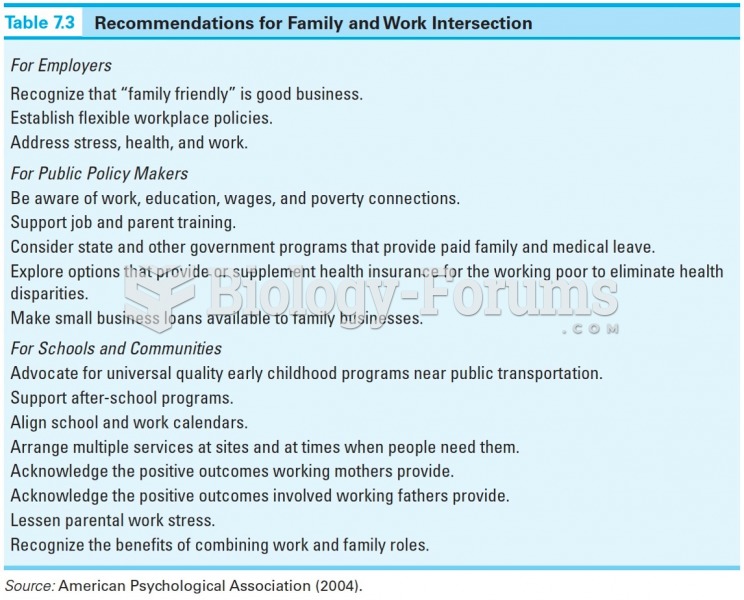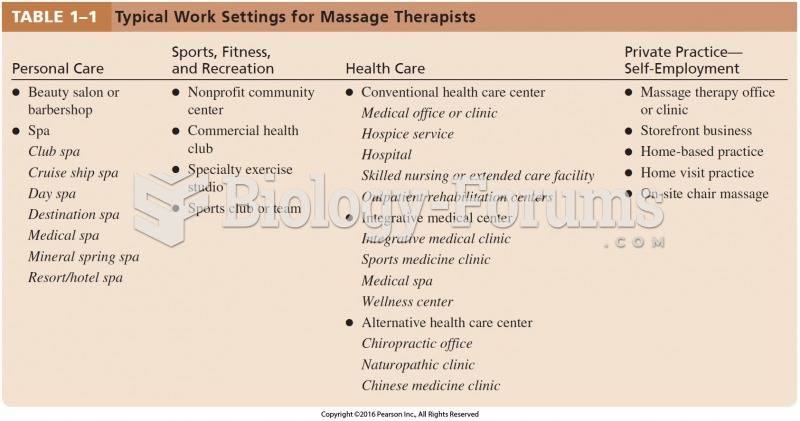|
|
|
Sildenafil (Viagra®) has two actions that may be of consequence in patients with heart disease. It can lower the blood pressure, and it can interact with nitrates. It should never be used in patients who are taking nitrates.
To maintain good kidney function, you should drink at least 3 quarts of water daily. Water dilutes urine and helps prevent concentrations of salts and minerals that can lead to kidney stone formation. Chronic dehydration is a major contributor to the development of kidney stones.
Bacteria have been found alive in a lake buried one half mile under ice in Antarctica.
About 100 new prescription or over-the-counter drugs come into the U.S. market every year.
The first oncogene was discovered in 1970 and was termed SRC (pronounced "SARK").







